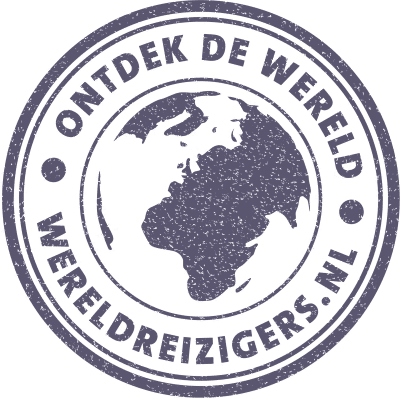We're on the road again! We put the 4×4 camper on the ferry to the Faroe Islands and then travel on to Iceland† The Faroe Islands belong to the territory of Denmark and from Hirtshals we make the crossing. Hirtshals is a place where the activity around the harbor occupies an important place. Industry, sea freight and huge wind turbines define the horizon. The ferry's final destination is Iceland, but on the way we leave the boat for a few days to visit the Faroe Islands. After Iceland we go back to Norway to travel there via the fjord coast further north to Tromso, but more about that later.
The ferry crossing to the Faroe Islands
The boat trip across the North Atlantic to the Faroe Islands is one to remember. We experience how terribly large and powerful the Atlantic Ocean is.
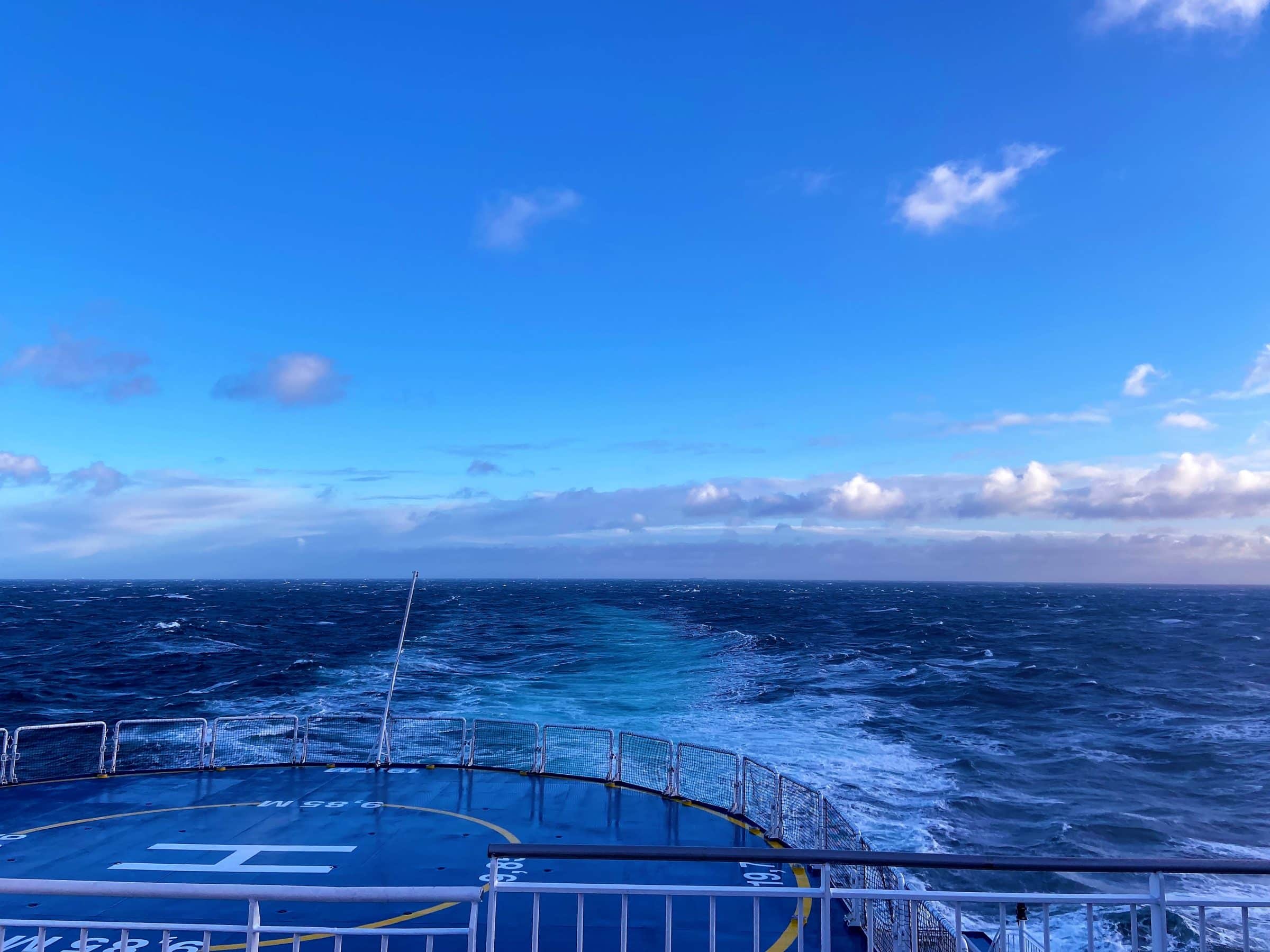
the ferry MS Norrona is a fantastic boat. Amenities are plentiful and everything seems new after a recent renovation. But the strong wind, which regularly reaches gale force, determines the feeling. The waves “play” with the many-ton ship. And we, we're doomed to stretch out on our beds. In that position, the swell has the least effect on our stomach contents.
After almost 50 hours we are reunited with our 4×4 motorhome which is a few decks down and we reach the harbor of the Faroe Islands in the capital Tórshavn.
Also read: Ferry to Norway from Groningen (Eemshaven) | April 2022
Campsite Giljanus
Because we dock later than planned, it has now become pitch dark. Inquiry tells us that only one campsite is open on the entire island group. After half an hour of steering we reach the “camping”. It turns out to be a hostel called Giljanus where camping is allowed in the parking lot. We are allowed to use the hostel sanitary facilities. That is nicely arranged.
The next morning, when it slowly gets light, we see the contours of the landscape for the first time: semi-snow-covered rocks sometimes protrude perpendicularly far above the sea surface and waves crash incessantly against the rock walls. What a mighty spectacle, we are going to have a lot of fun here.
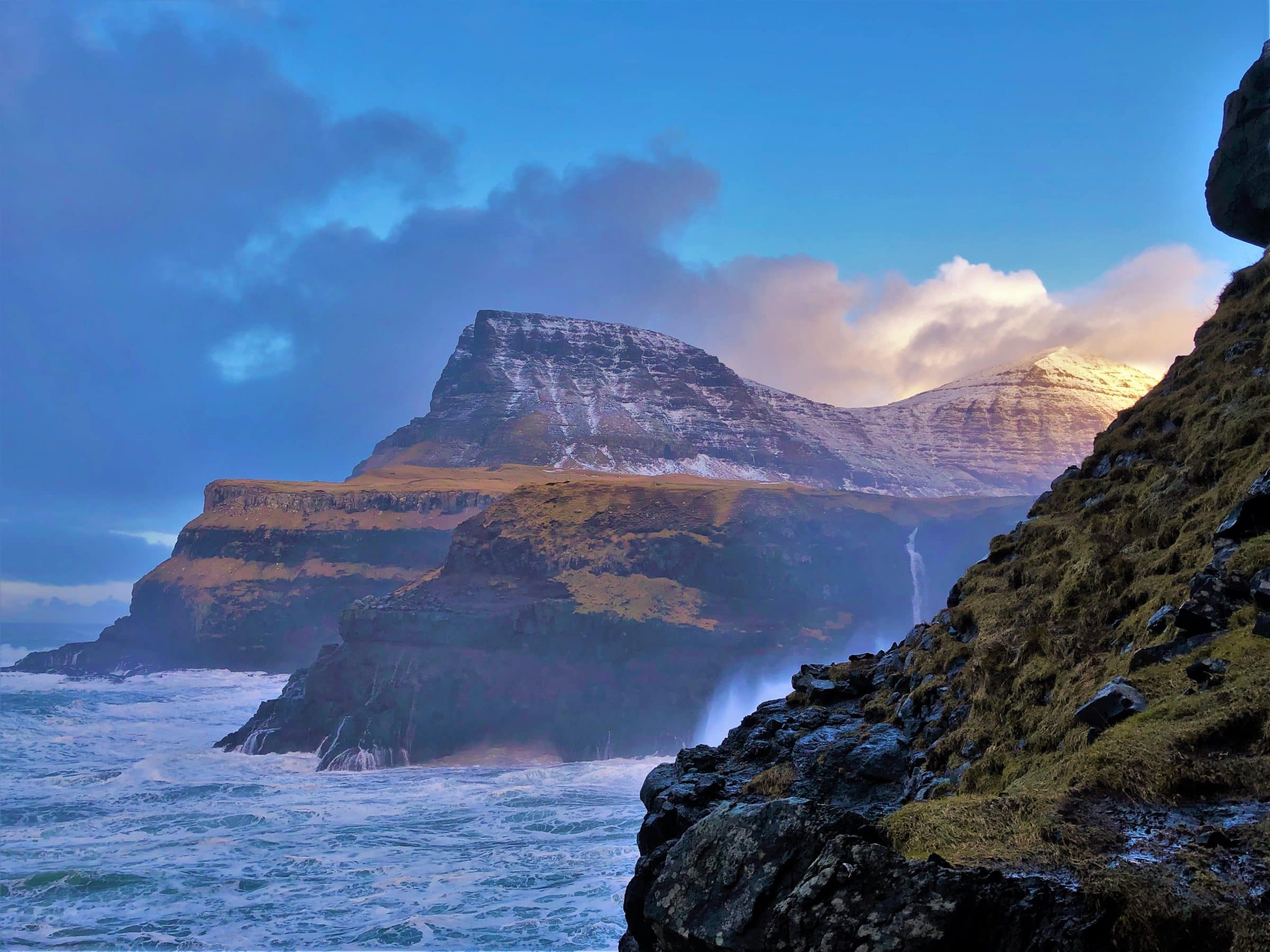
50.000 inhabitants and many sheep
About 50.000 people live in the Faroe Islands, 40% of whom live in the capital Torshavn. The total land area is comparable to the province of Utrecht. There are no trees on the islands...not even a shrub, just grass and moss.
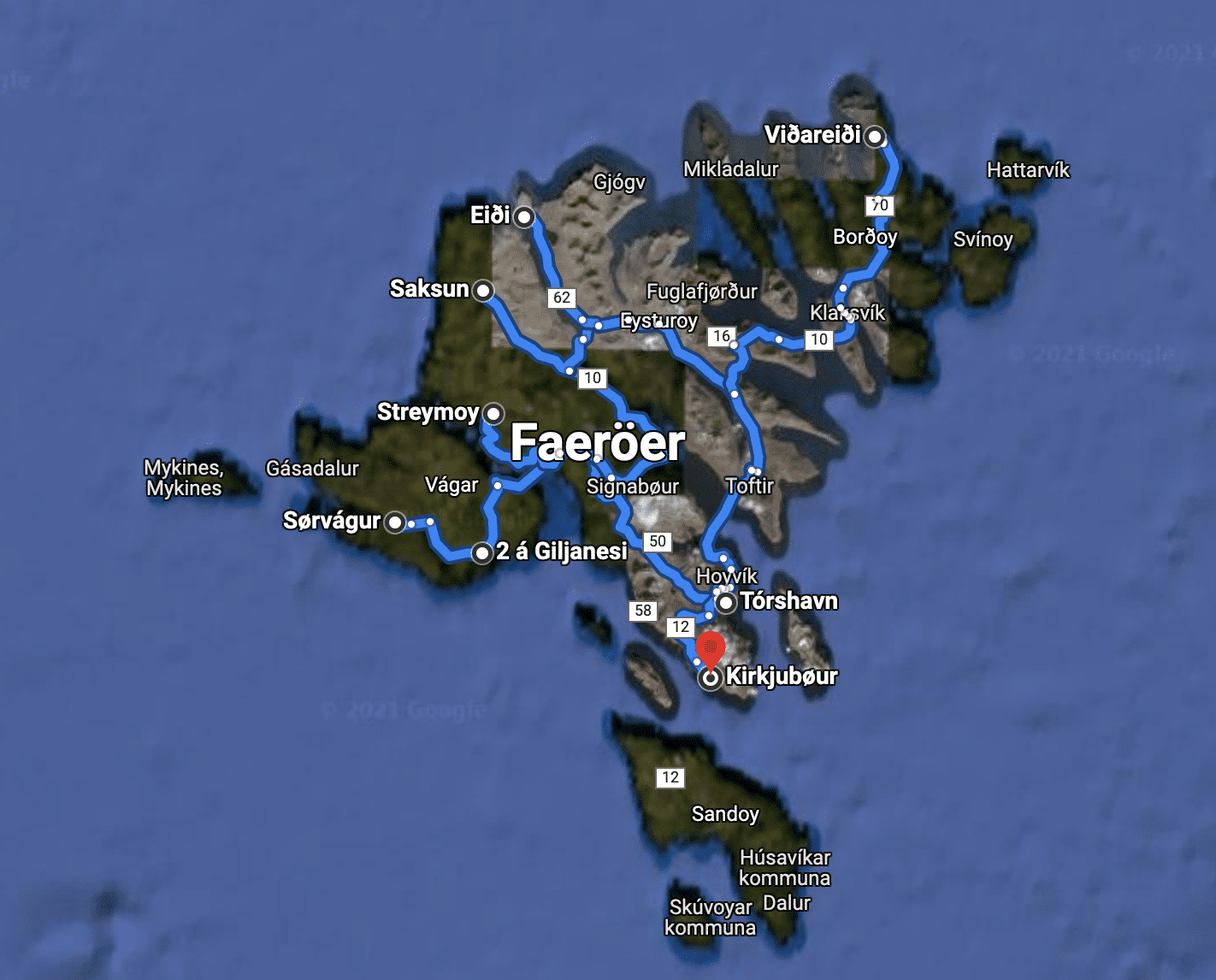
The steep slopes are grazed by a huge population of sheep. By the way, sheep are almost sacred to the inhabitants...don't hit a sheep, because that will cost you a lot of money.
Roads washed away
We drive around on the well-maintained asphalt roads to get a first impression. In this way we arrive at the village of Gasadalur. Here waves crash on rocks. We have seen many coasts, but the violence that the sea shows here is overwhelming. We continue on quiet winding roads to the most remote village of the islands: Saksun.
8 people live here. We walk around for a while and enjoy the peaceful atmosphere now that there are no tourists.
According to a brochure there is a camping site open near the village of Eidi. But when we arrived there, it turned out that a flood had occurred 2 days ago. It is quite a havoc and the access road has been swept away. We decide to go wild camping on the road. Necessity knows no law.
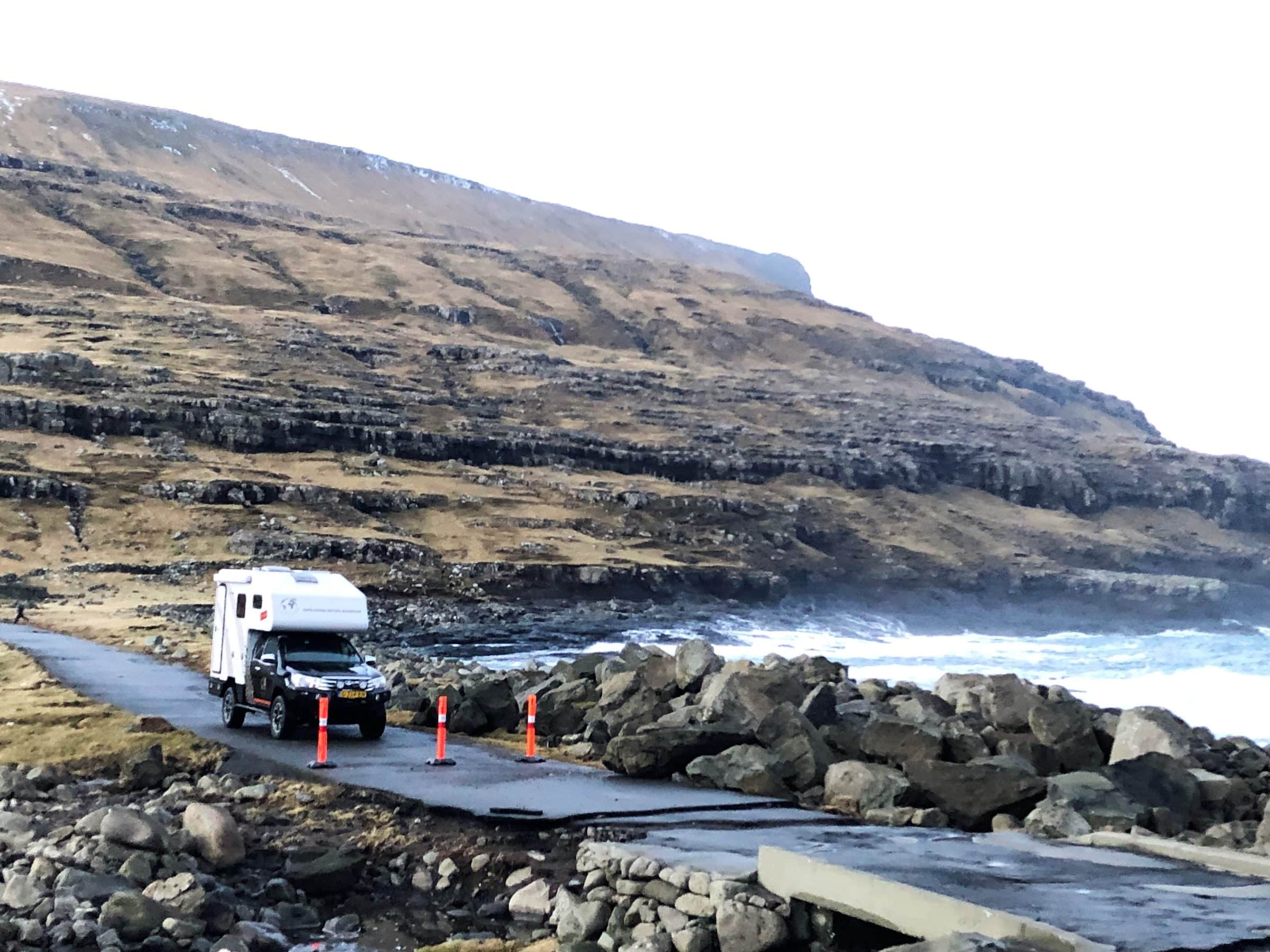
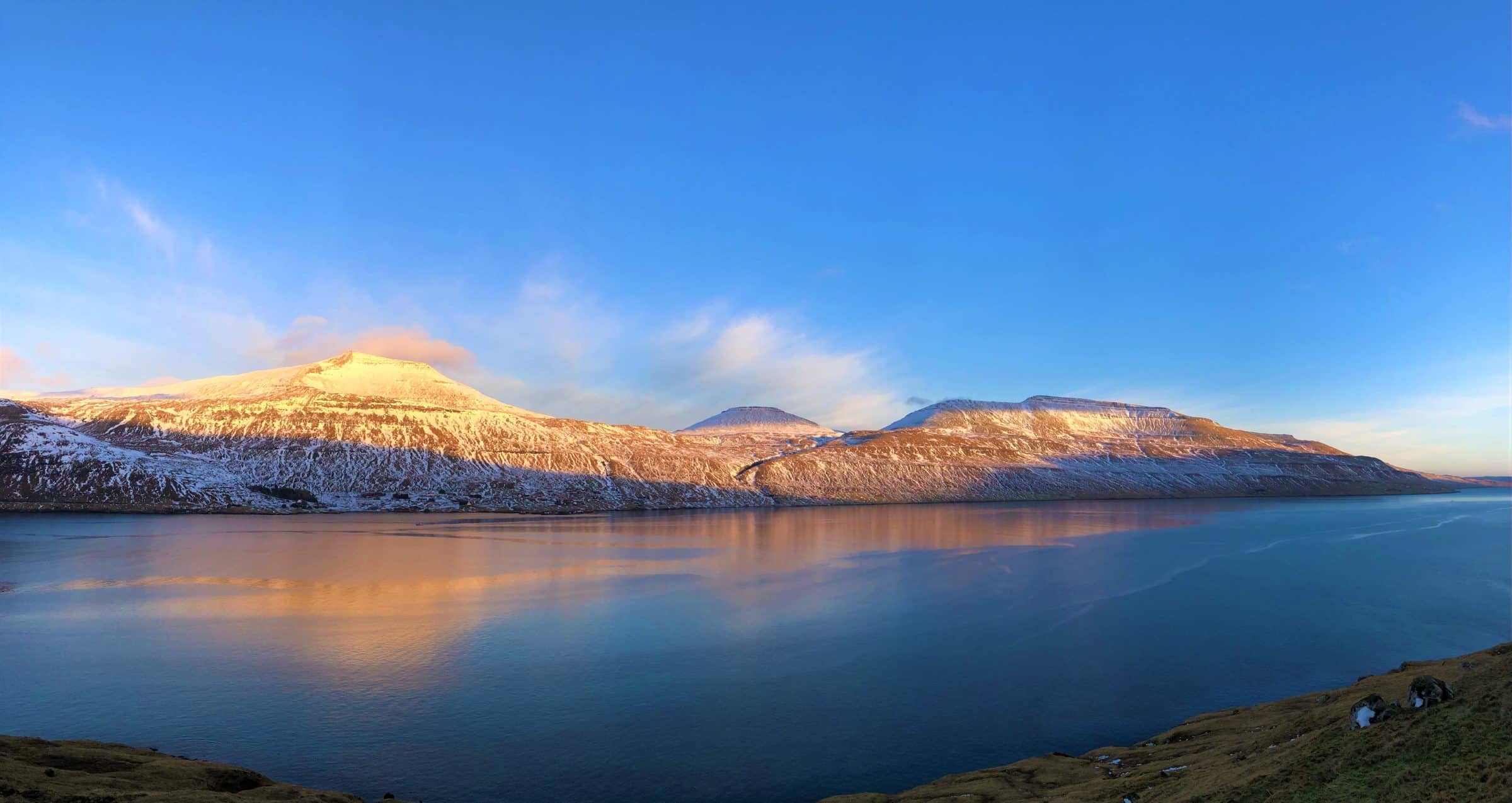
Rain and wind
It's not all fun in the Faroe Islands in winter…sometimes it rains…all day. So the second day of our stay falls into the water a bit. Nevertheless, we go out to drive the Panorama road from Eidi to Gjogv. The views are limited due to the rain, but what you can see is impressive.
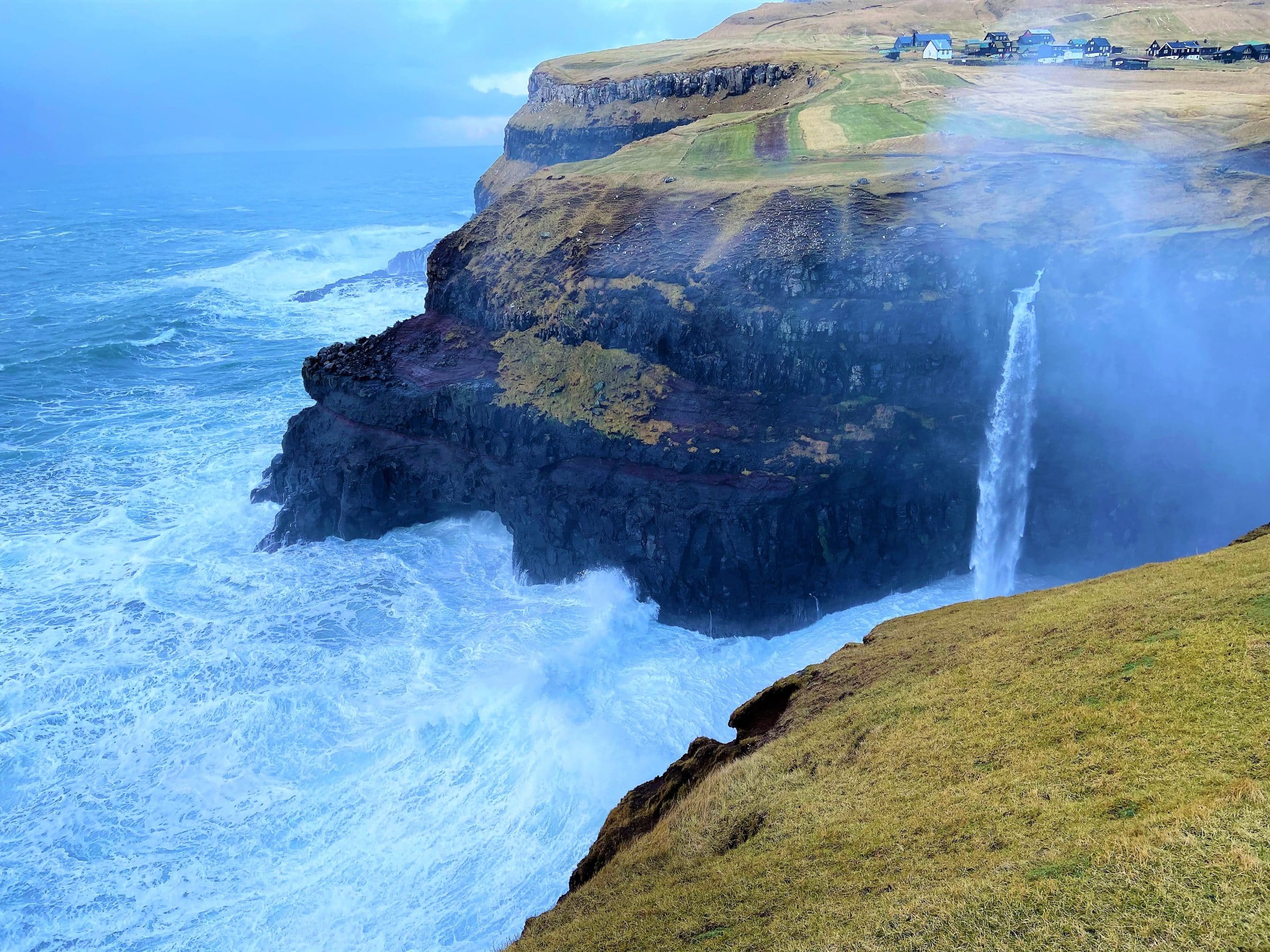
During the ascent on the deserted winter mountain road, the rain quickly turns to snow. On the steep parts the challenge gets bigger and bigger…too big. The narrow road is barely distinguishable from the verge. Despite the fact that our 4×4 camper is well equipped, we decide to turn around.
We end up in a village called Vidareidi, where a friendly resident tells us to have no problem parking our camper in the parking lot in front of his house for the night.
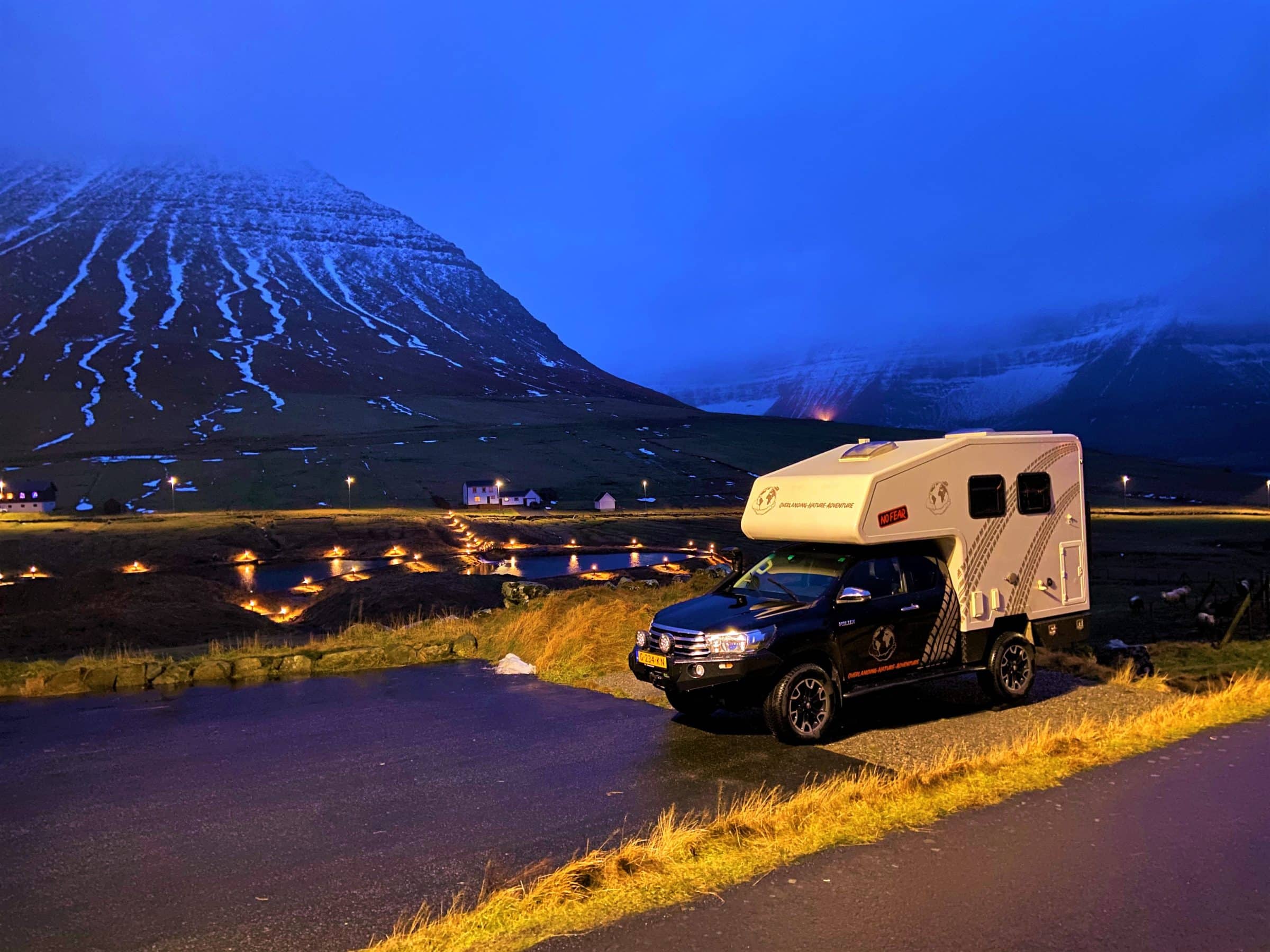
The roads on the 18 Faroe Islands are also very well maintained. There are a number of tunnels connecting islands. Tolls have to be paid for three of these tunnels, which can only be done online.
Kirkjubour
This historic settlement on the island of Streymoy exudes tranquility. Kirkjubøur is at the end of a cul-de-sac and most of the small number of houses are black with red frames and grass roofs.
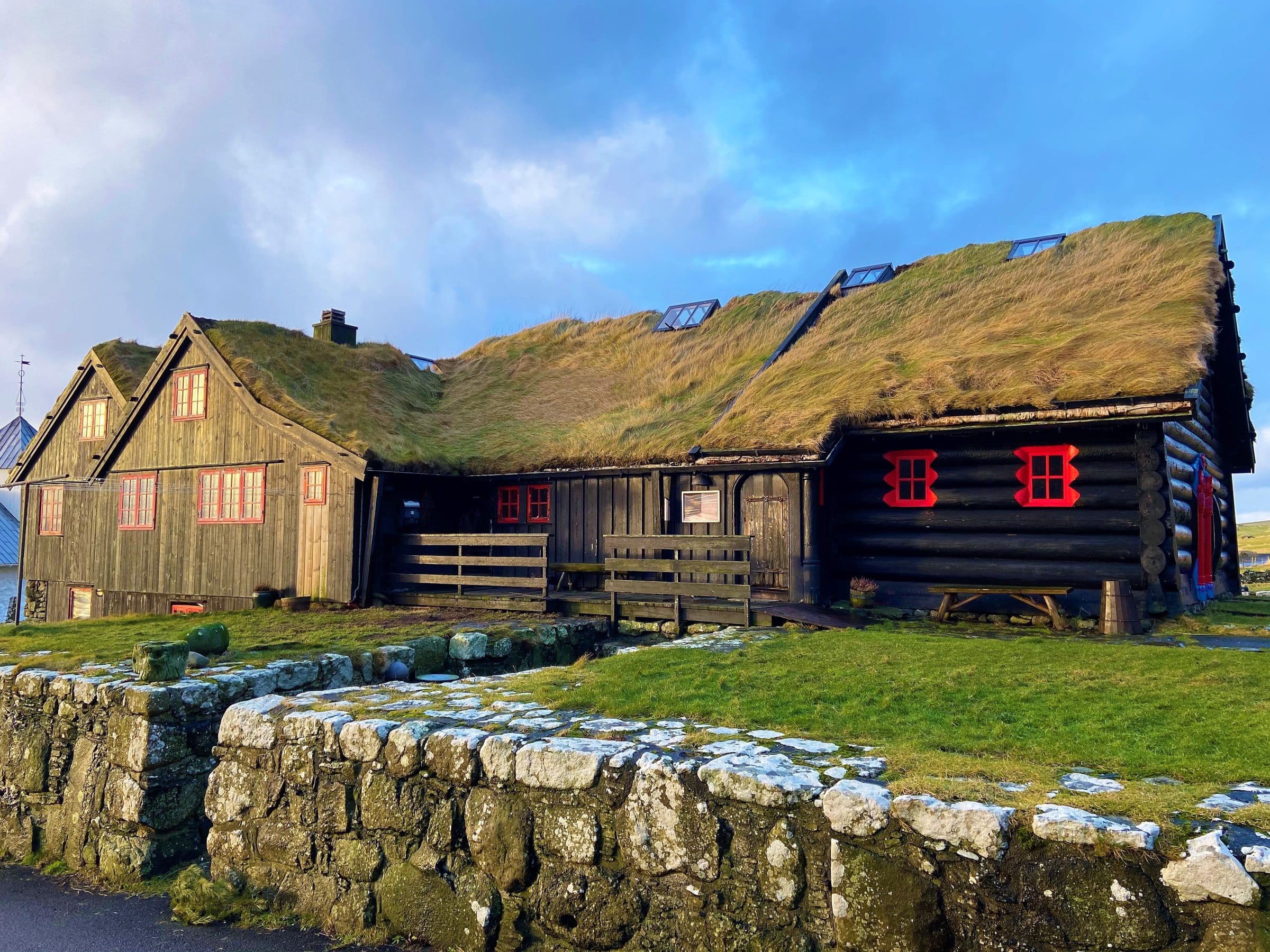
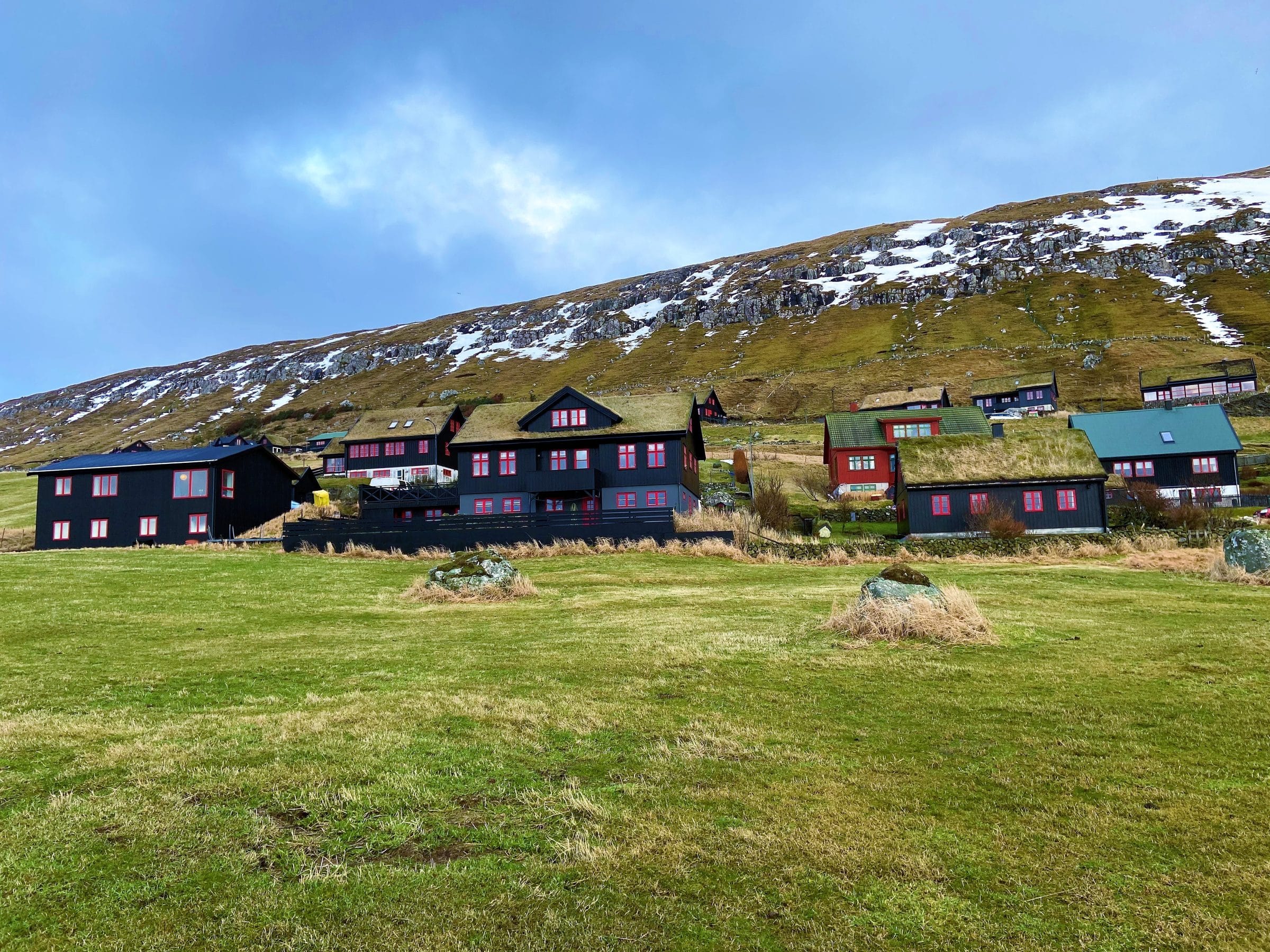
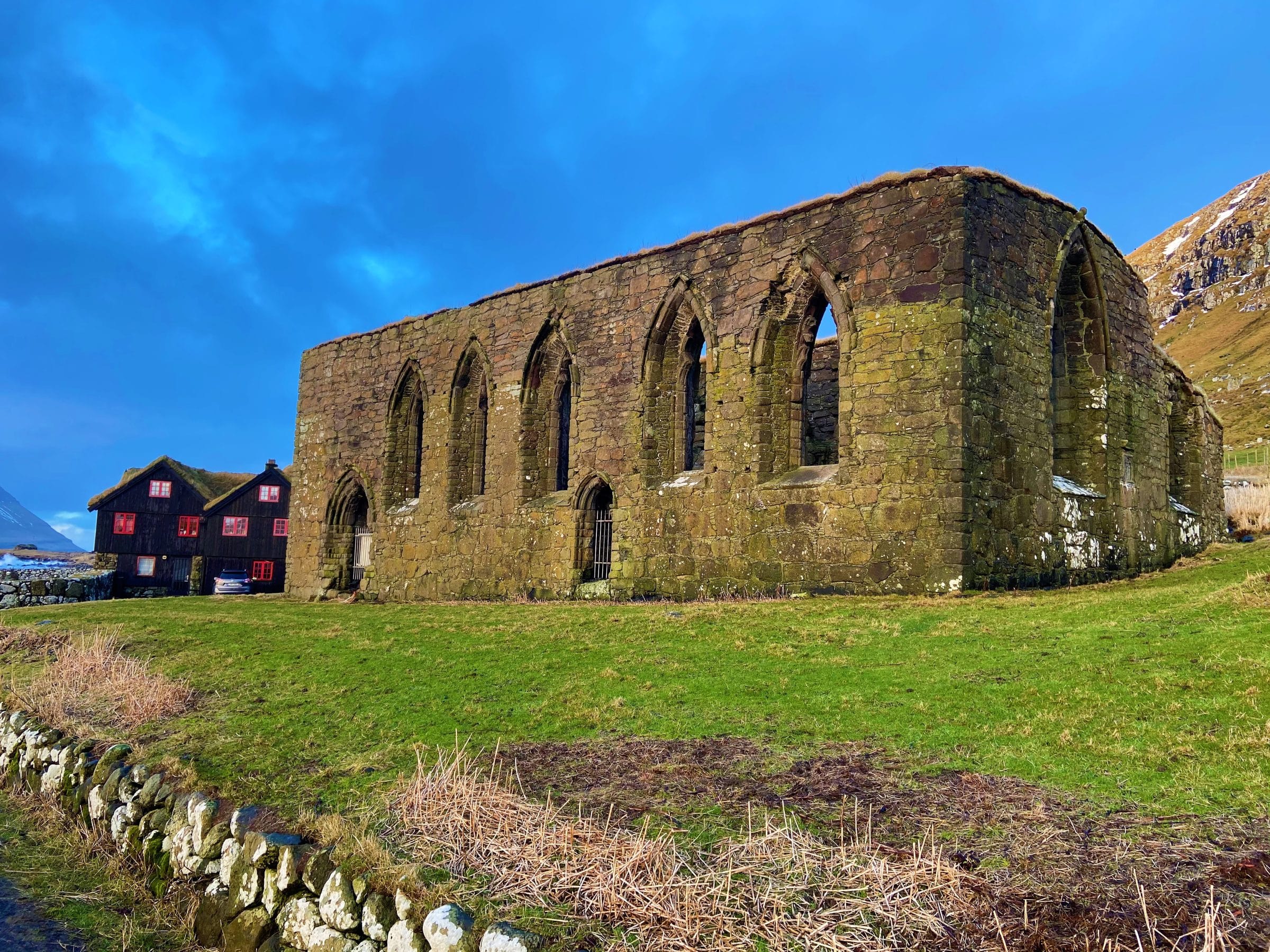
In the village there is a farm which has been inhabited by the same family for 18 generations. According to a legend, it was built from washed ashore wood, which a ship is said to have lost. After acquainting ourselves with the historical background, we take another walk over the steep mountain slopes and get an impressive overview of the rough rocks with the waves crashing against them.

Tórshavn
On the last day of our visit to the Faroe Islands we take a look at the capital. One of the smallest capitals in the world, that's what makes it so special. The cozy village atmosphere with a decent range of shops and facilities is probably one of the reasons that the inhabitants of these remote islands like to stay here. After all, just going to another city will cost you a boat trip of at least 2 days. The old part of the city where, among other things, the 9th! century-old parliament still sits on the Tinganes peninsula is full of history and is therefore more than worth a visit.
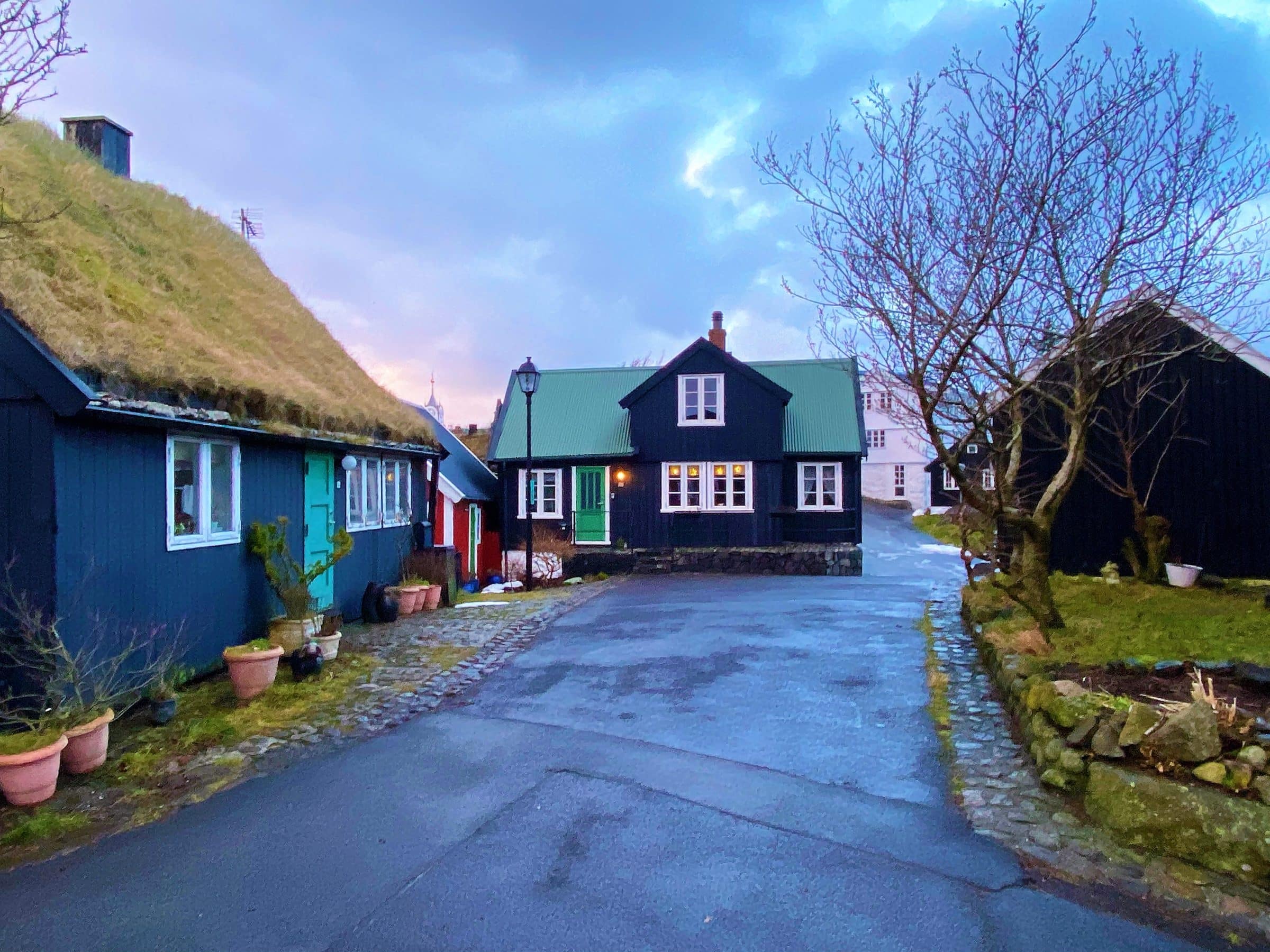
We take a look around the port where people are busy with the transshipment of containers and realize that by far everything that makes a human life pleasant has to be brought in. Mutton, lamb and fish will be the main exports.
For a cup of coffee, a local beer or delicious homemade cake we can go to café Paname recommend. This family business is located right in the center in a historic building with a grass roof and is definitely worth a visit because of the friendly atmosphere and all the goodies.
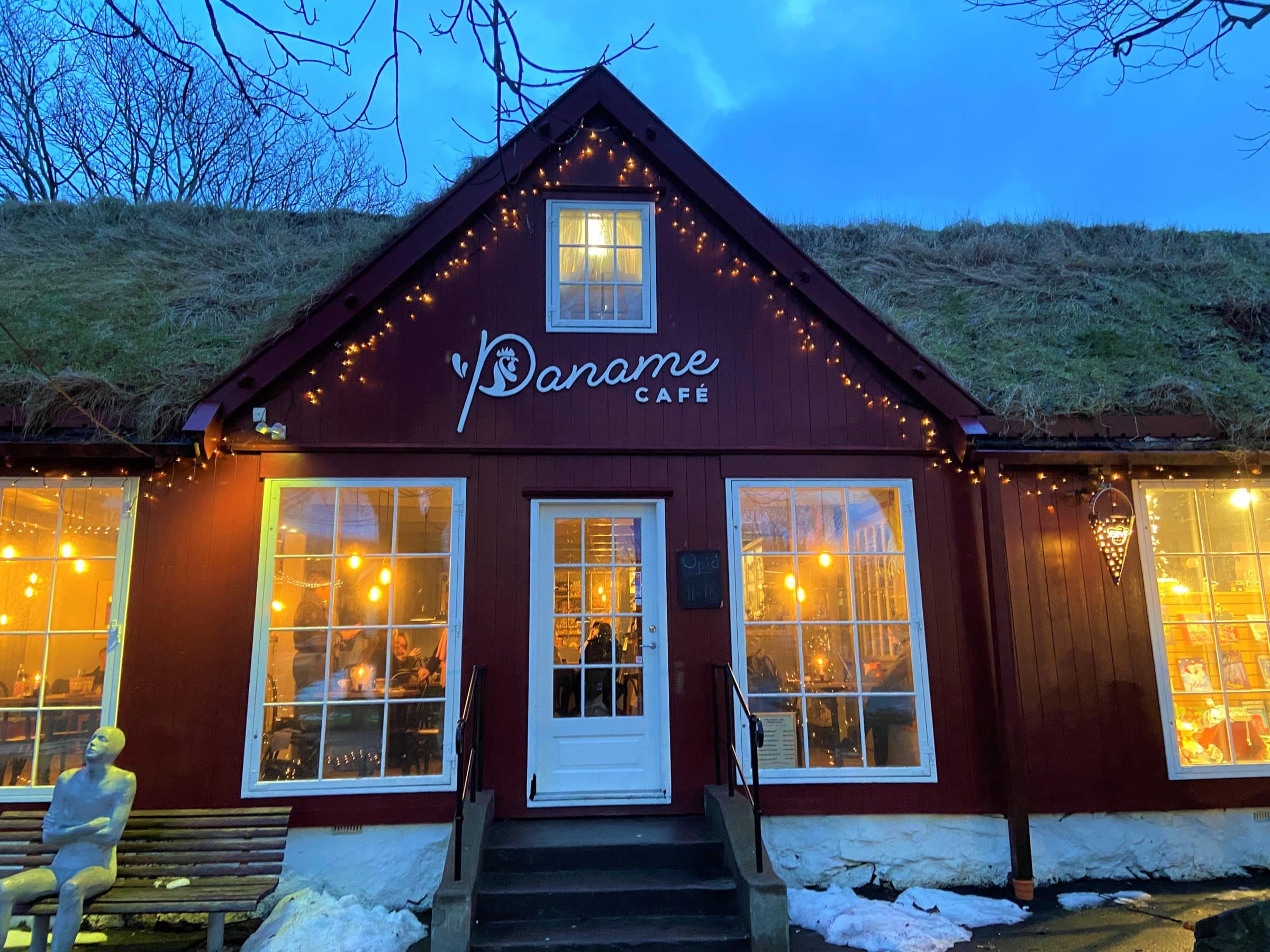
On to Iceland
Two days before departure we receive a text message from Smyril Line informing us that due to weather conditions the ferry will leave the day before. This is to prevent a storm at sea. It is a pity that our winter visit will be shortened by one day.
The Faroe Islands are visited by few in winter. Yet it was precisely during this period that we were able to see what life looks like on this remote island group. We were able to find one of the available campsites on the Faroe Islands that was open. The other nights we spent "wild" which is forbidden in itself and we don't want to promote it here. Actually our visit was too short. When you are on the way to Iceland by ferry, it is best to “disembark” for a week.
We have now arrived in Iceland by ferry, more about that in the next blog!












